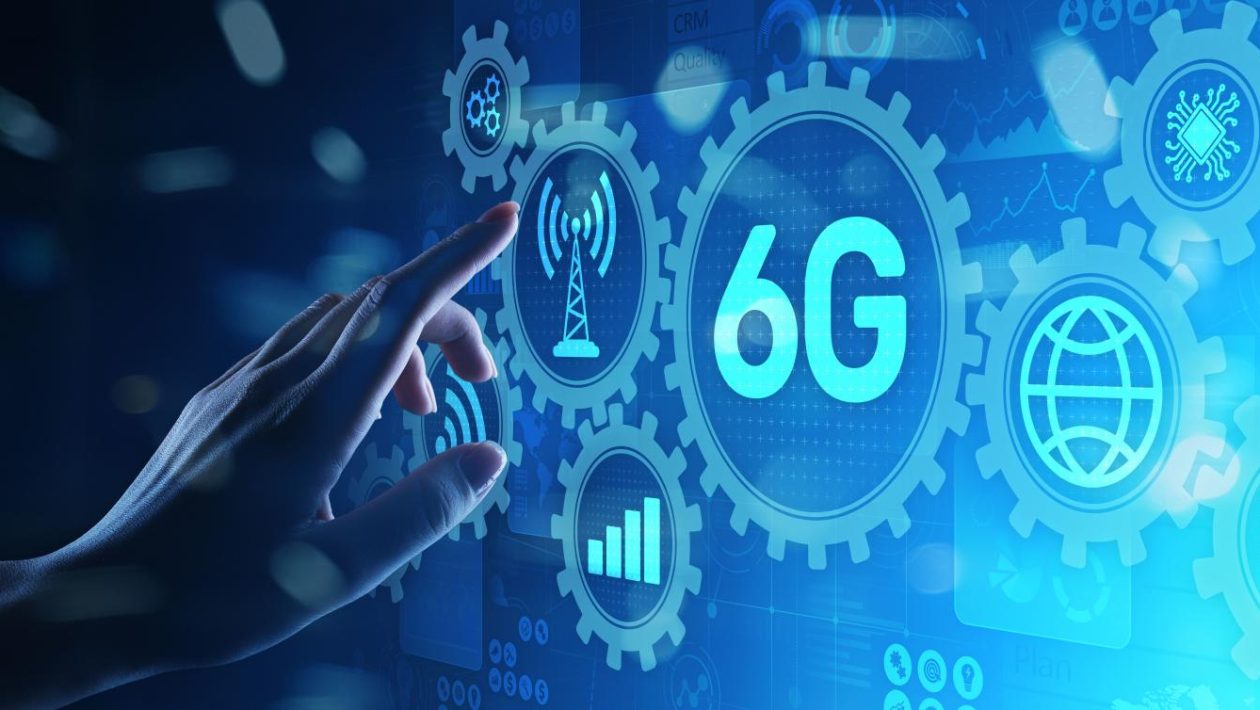Experience speed and connectivity beyond your wildest expectations. The next generation of cellular technology, 6G, will change how we interact online. It’s a big network technological advancement, not just an upgrade from 5G.
This introduction will explain 6G’s exciting prospects to non-technical audiences. Prepare to explore a world where knowledge moves faster than thought and everything is possible.
6G Network: What Is It?
A widespread 6G network will change how we engage with digital material. It’s a new network, not just an enhancement over 5G. This hypothetical network would enable low-latency, high-throughput communications using unlicensed radio airwaves and cutting-edge AI.
That’s 6G, but it’s still in development and unavailable. In succeeding generations, the ITU directs wireless technology. It should be much faster than 5G. It will utilize wider wireless frequency bands and advanced digital encoding, making older devices obsolete.
The ITU plans to define 6G by 2028. It implies that the first 6G devices will launch around that time, with considerable deployment by 2030.
6G offers incomprehensible hyper-connectivity in the fast-growing digital economy. This is a quantum leap in human communication. Prepare for a new era of connection that will change our lives.
How will 6G work?
Since the ITU currently defines 6G, wireless technology’s future could be clearer. By analyzing cellular network development, we may predict many key traits.
Unused radio airwaves are one of 6G’s most intriguing aspects. Imagine exploring the electromagnetic spectrum’s undiscovered depths. 6G intends to break new ground by running at hundreds of gigahertz or terahertz, whereas 5G can sustain 100GHz. Though small and sensitive, these wavelengths may allow one-day lightning-fast data transfer.
Effectiveness matters, too. Most wireless technologies now allow just one of these tasks simultaneously on a certain frequency. Using advanced mathematics, 6G will enable simultaneous transmission and reception on the same frequency, transforming the industry. This requires greater spectrum efficiency than before.
6G might change the hub-and-spoke model of 5G networks. Imagine a future where devices exchange data with cell towers and increase signal strength. This might boost network dependability and coverage.
Finally, 6G may offer a new IP. Consider using a lightning-fast courier service instead of snail mail. This improved IP packet would contain navigation and priority information to ensure data arrives efficiently.
When will 6G be used?
The long-awaited 6G network will emerge between 2030 and 2035. This timetable follows ITU and IEEE guidelines, two major technology standardization bodies.
This timeframe is noted in the IEEE’s peer-reviewed 6G Architecture to Connect the Worlds, emphasizing its importance post-pandemic. They call for a global 6G plan that promotes development, sustainability, and digital inclusiveness.
6G technology was discussed earlier, but R&D didn’t begin until 2020. As shown by Europe’s 6G Flagship, Japan’s $482 million 6G development, and Russia’s 2035 6G network availability estimates, the globe is ready for this new era of communication.
AT&T, Verizon, and T-Mobile are among the U.S. mobile operators vigorously pursuing 6G innovation roadmaps. The Next G Alliance is an industry collaboration to promote 6G infrastructure. This collaboration initiated a technology development effort in May 2021 to advance 6G.
Despite 6G’s long wait, numerous nations and organizations are already laying the groundwork for its adoption, ensuring faster and more advanced wireless access.
Features of 6G Network
New Frequency Bands
The untapped spectrum bands of 6G identify it. Radio is like creating new motorways. Low bands (460-694 MHz) for urban coverage, mid-bands (7-20 GHz) for better capacity, and sub-terahertz spectrums (90 GHz to 300 GHz) for data speeds of 100 Gbps are expected in 6G.
Incredible Transfer Rates
5G’s 20 Gbps data throughput is impressive, but 6G is far faster. It promises 1 Tbps data speed, boosting user performance to 1 Gbps. Since 6G’s spectral efficiency is more than twice that of 5G, customers would have rapid access to multimedia services, but new network equipment is needed.
Ultra-Low Latency
The user-experienced latency of 5G is sub 1 millisecond, while 6G aims to break records by decreasing it below 0.1. This lowering improves real-time applications, including emergency response, remote surgery, and industrial automation. 6G networks are 100 times more reliable than 5G.
Benefits of 6G Network
Safety
The rising frequency of assaults across a broad spectrum of networks has increased the need for trustworthy security solutions. Jamming security may improve in 6G networks. Privacy problems will be addressed to ensure the safe coexistence of digital and real-world components in 6G mixed-reality circumstances.
Ultimate Customization
6G will use OpenRAN to improve personalization over 5G. Mobile network operators may create network experiences using real-time data from several sources by embedding AI into their Radio Access Networks (RAN). This data may enhance QoE and QoS, enabling more personalized alternatives.
Supercharged 5G Applications
The huge bandwidth and lightning-fast reaction of 6G will boost 5G app efficiency. It will expand wireless networking, cognition, monitoring, and imaging capabilities, enabling new applications. Modern OFDMA technologies would allow 6G access points to serve several customers simultaneously.
Extensive Coverage and Reduced Interference
The architecture allows 6G networks to cover huge areas with fewer towers. This is useful in jungles and rainforests. 6G’s ability to serve more mobile connections will reduce device interference and improve service quality.
Conclusion
6G marks a new technological age. It envisions a world where knowledge is freely shared, AI can interchange data at light speed, and creativity is limitless. The framework for a digital world beyond our wildest fantasies is being laid between 2030 and 2035. With its ultra-fast data transmission speeds, near-zero latency, and focus on machine-to-machine connectivity, 6G will change technology.
